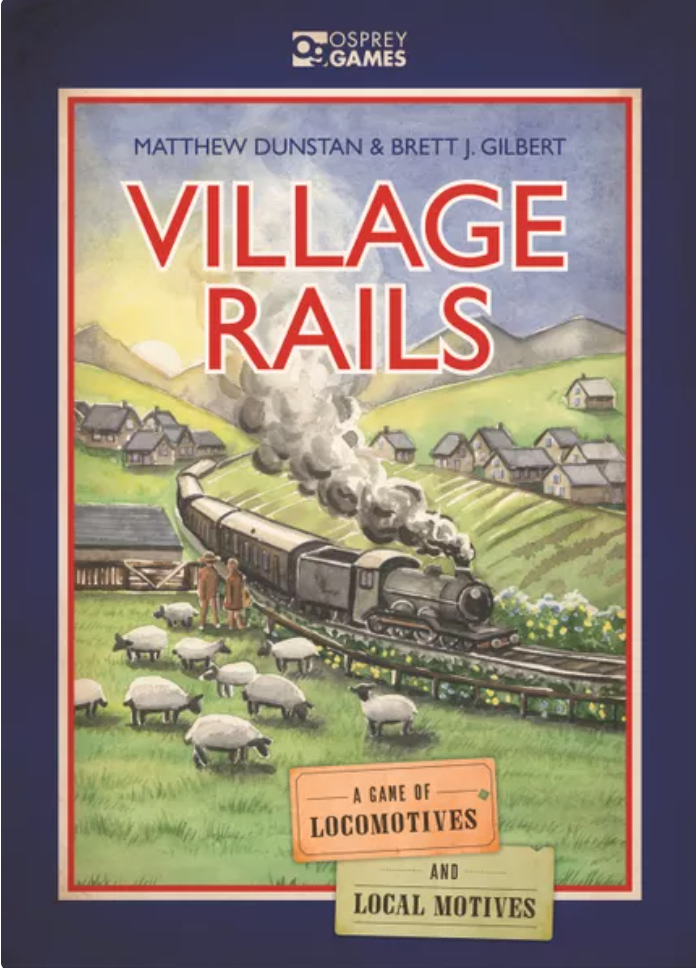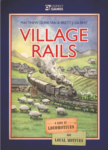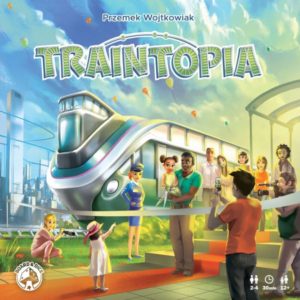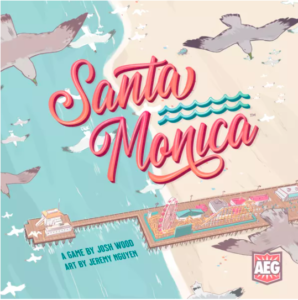- Learning time
- 20 minutes
- First play time
- minutes
Village Rails
Designed by: Brett J. Gilbert,Matthew Dunstan
Village Rails is a route-building game where each player constructs railways into their own 3×3 tableau, using cards to do so. Each railway card is double-sided, with a railway (and landscape type) on one side, and a scoring criteria on the other, referred to as the trip side. There’s a second deck of cards too – the Terminus cards – which we’ll come to shortly.
In the centre of the table are a column of railway cards railway-side up, and a smaller column trip-side up. On each of your twelve turns, you must build track, which means taking any of the track cards you can afford and adding it to your tableau. The bottom card is always free, but if you want another card from the column, you have to drop a coin on every card you go past (you begin with five coins). If you take a card with coins on, you get the coins too. Adding to the tableau is simple, it must connect to either a starting section of route, as defined by the cardboard borders, or to a route you’ve begun building.
You can also optionally Plan a Trip. Doing this means spending 3 coins for the privilege, and then – as with the track cards – pay a coin onto any card you pass by from the ‘free’ card at the bottom of the column. Trips are placed at the start of any one of your seven tracks, and each track can have up to two trips on it. Trip cards define how much each track will score when complete… which brings us to Terminus cards.
You begin the game with three Terminus cards and whenever a track is completed – ie, it has nowhere else to go – you play a Terminus card from your hand, which gain you cash: how much depends on the track you’ve just completed, but it’s always a minimum of three coins. Cash is obviously helpful for getting cards that are more alluring to you (before someone else does!) but also scores points at the end of the game, and serves as a potential tie-breaker. The other end-game scoring is the number of sidings (purple icons) everyone has on their tracks – most points wins!
The guru's verdict
-
Take That!
Take That!
There's no direct interaction at all, so the any moments of crestfallen despair will be both inadvertent, and reasonably fleeting. More cards are constantly arriving, like trains after the leaves have been cleared.
-
Fidget Factor!
Fidget Factor!
You need to be okay with a game that is happy to be played at a sedate, Sunday afternoon pace: that's what Village Rails is pitching for, and on those terms, succeeding.
-
Brain Burn!
Brain Burn!
You've seven tracks total, and each build action must move at least one of them forward. Then the trips define how each track scores: the rules aren't heavy, but there's plenty to mull over tactically speaking.
-
Again Again!
Again Again!
If you like the puzzle Village Rails offers, the cards are numerous and you'd need to play a LOT before you felt like it was becoming routine. Each new shuffle creates a new challenge.












Sam says
Village Rails is an endlessly variable, compelling little puzzle that is beautifully presented. If I'm in that frame of mind - a semi-solo undertaking, with barely any interaction at all - it's pleasingly brow-furrowing. Generally though, I like a game with a bit more direct interaction beyond the passive taking-of-options, and although you can play it in a marginally feisty manner - keeping an eye on what others want and playing spoiler tactics - it both undermines your own plans, and drags out the game, which at an average of 45mins is already reasonably lengthy. It looks so pretty I want to like it more, but there's a slightly quiet, sober air to it when it looks like it was going to be more fun. For the gentle, genteel puzzlers though, this could be right up your siding.